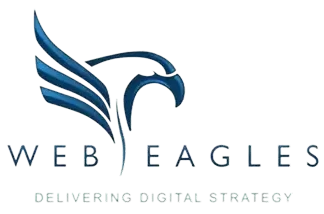Crafting SEO-Friendly Content That Captivates and Converts
Creating content that not only grabs the attention of your target audience but also ranks high on search engine results pages (SERPs) is crucial.
Crafting SEO-friendly content is an art that combines creativity and strategic thinking to maximise visibility and engagement. At WebEagles, we understand the key elements of creating content that not only captivates your audience but also converts visitors into customers.
Understanding SEO Basics
Search Engine Optimisation (SEO) is the foundation of online visibility. To create content that resonates with your target audience and search engines, it’s important to understand the basics of SEO.
Start with keyword research. Identify relevant terms and phrases your audience is likely to use when searching for information related to your niche.
Long-tail keywords, which are more specific and detailed, can be valuable in attracting a targeted audience. Tools like Google Keyword Planner or SEMrush can help you find keywords with high search volumes and low competition, providing insights into what your audience is searching for.
Quality Content is King
No matter how advanced your SEO strategy is, high-quality content remains at the core of online success. Google’s algorithms are becoming increasingly sophisticated at recognising content that genuinely adds value and is ‘helpful’ to users. This means your content should be informative, engaging, and well-written.
When creating content, focus on solving problems or answering questions your target market may have. This not only establishes your authority in your industry but also keeps visitors on your page longer, a factor search engines consider when ranking pages.
Optimise On-Page Elements
Once you have compelling content, optimise on-page elements to improve its search engine visibility. Start with the title tag, meta description, and URL. Incorporate your target keywords naturally within these elements while maintaining readability and relevance. A well-crafted title tag can significantly impact click-through rates, so make it compelling and informative.
Headers (H1, H2, etc.) play a crucial role in structuring your content and signalling its importance to search engines. Break down your content into sections using relevant headings and incorporate keywords where appropriate. This not only enhances readability but also provides a roadmap for both users and search engine crawlers.
Engaging Multimedia
In the digital age, content is not limited to text alone. Integrating multimedia elements like images, videos, and infographics can significantly enhance the user experience. Visual content is more shareable and can contribute to longer average time spent on your page, a positive signal for search engines.
Ensure that your multimedia elements are optimised for search engines by including relevant alt text, captions, and descriptive file names. This not only improves accessibility for users with disabilities but also provides additional context for search engines.
Mobile Optimisation
With an increasing number of users accessing the internet on mobile devices, optimising your content for mobile is no longer optional. Google prioritises mobile-friendly websites, and non-optimised content may rank lower in mobile search results.
Responsive design is crucial to ensuring a seamless experience across different devices. Test your content on various devices to ensure it displays correctly and is easy to navigate. Mobile optimisation contributes not only to SEO but also to overall user satisfaction.
Backlinks and Internal Links
Building a strong link profile is an essential aspect of SEO. Backlinks, or external links from other websites to yours, signal to search engines that your content is valuable and authoritative. Cultivate relationships within your industry to encourage natural backlinks, and create shareable content that others in your niche would find valuable.
Internal links, on the other hand, connect different pages within your website. This not only helps with navigation but also distributes the authority and relevance of one page to others. When creating content, look for opportunities to link to other relevant pages on your website, creating a cohesive and interconnected site structure.
Analyse and Repeat
SEO is an ongoing process that requires constant analysis and adjustment. Utilise tools like Google Analytics and Search Console to monitor the performance of your content. Track key metrics such as organic traffic, bounce rate, and conversion rates to understand how users interact with your content.
Pay attention to user feedback, comments, and social media engagement to gain insights into what resonates with your audience. Use this information to refine your content strategy, making data-driven decisions to improve both SEO and user satisfaction.
Remember, the key is to strike a balance between SEO best practices and delivering real value to your audience. At WebEagles, as your trusted content marketing agency, we work with our client to craft SEO-friendly content that will resonate with their audience.
Looking to up your SEO game? Speak to the team at WebEagles today.


